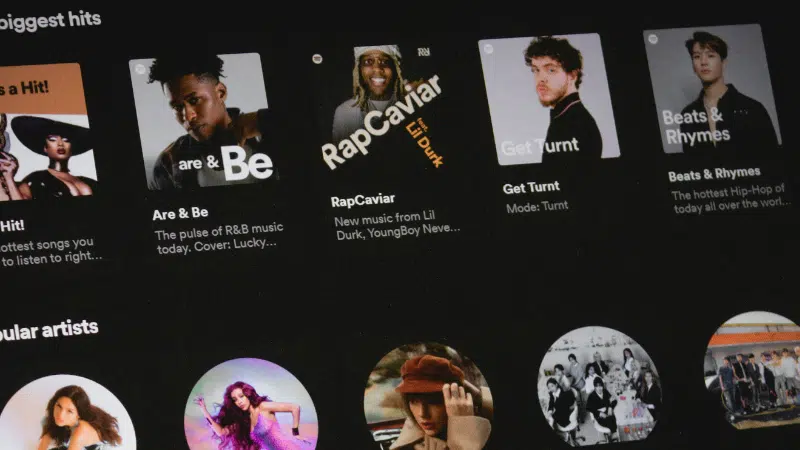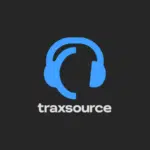Spotify uses a combination of data-driven algorithms to recommend music to its dedicated listeners. These take into account a variety of factors like user behavior, song performance, metadata and more. But did you know there’s a lot you can do to influence these algorithms to push your music to more fans, and get you new ones in the process? From playlisting to audience segmentation and more, here’s how to feed the algorithm to get your music seen by more people than ever…
How To Feed The Spotify Algorithm To Get More Streams
Optimize Your Spotify for Artists
Having a fully complete profile helps Spotify (and users) recognize you as a serious artist. That means you need to claim and customize your artist profile. Once you’ve claimed yours, make sure it’s up to date with a compelling bio, upcoming concerts, and updated artist photos. You can also optimize the performance of your profile within the algorithm by utilizing Spotify features like Discover Mode and Marquee.
With Discovery Mode, artists and labels can identify songs that are a priority for them, and Spotify’s system will add that signal to the algorithms that determine personalized listening sessions. Essentially, this increases the chances of those selected songs being recommended to listeners. Now, this doesn’t guarantee your music is going to be pushed over anyone else. All it does is take into consideration if listeners are engaging with your songs or not and how to recommend better material for them in the future.
Marquee is a full-screen, sponsored recommendation of your new release to Spotify Free and Premium listeners who have shown interest in your music and have the potential to listen more. Although this isn’t a new tool, many of our artists don’t take advantage of this great feature! When the Marquee pops up, listeners are nudged to check out your newest release and explore.
The First 24–48 Hours Matter
Spotify’s algorithm (especially Release Radar) prioritizes new releases that perform well in the first 24-48 hours. If your music gets a lot of streams, saves, and shares early on, the algorithm will push it to more listeners.
To push your music during this time, encourage your existing fan base to stream, save, and share your new releases immediately after launch. Getting your song added to listeners’ playlists during this critical period is key. Two ways you can do this include Spotify Codes and Pre-saves.
With Spotify Codes, you can share any track, album, playlist, or artist profile with the click of a button. If you’ve got a Spotify URI for it, you can generate a Spotify Code. Since it can sometimes be difficult to link followers to external URLs on socials, you can share a picture of your Spotify Code instead. Ask fans to take a screenshot, and they can link right to your music with it. These are also perfect to use on visual media such as posters, flyers and merch, but also on Instagram, Snapchat, and YouTube.
Pre-saves are similar to preorders. With it, you can promote an upcoming release by giving your fans the opportunity to save it in advance prior to the actual release date. That way, they’ve got it saved and ready to go for the moment it finally goes live.
Getting on user-generated playlists is another way to get your music streamed once you release your music. Containing curators might take valuable time, and when trying to trigger Spotify’s algorithmic playlists, you can’t waste any time. Using a Spotify promotion platform like One Submit could launch your track to mass playlisters and increase your streaming in a short period of time.
Find & Focus On Your Target Audience
Your “Super Listeners” are your most dedicated listeners from the past 28 days. These are your biggest fans who you can consistently count on to engage with your music. Moderate Listeners may not be quite as engaged as your Super listeners, but they’ve still intentionally streamed your music multiple times in the past 28 days, making them the easiest to convince to engage further with your music. Light listeners may not have engaged with your music as much as the other two groups, but there’s still potential to get them more engaged over time.
✨ Note: We did a whole article that breaks down all these detailed stats like Segments, Listener Conversion Metrics, and more to help you not only find your target audience, but use that information to grow your fanbase to new heights. // Check out that post right here to dive deeper.
By understanding how your audience is segmented, you can target certain groups through more personalized campaigns built specifically for each group.
- For example, Spotify recommends artists, “Encourage active streams by creating a Marquee or Showcase campaign, updating your Artist Pick to attract more streams on your artist profile, or sharing a Promo Card to your social media.”
- On the other hand, Spotify also mentions, “…listeners in your programmed audience may be discovering your music for the first time through channels like editorial playlists or radio, so they may be primed to go deeper into your catalog in the future and join your active audience.”
Playlisting
Spotify for Artists allows you to pitch your new tracks to Spotify’s editorial teams and provides insights into listener demographics, which you need if you want to better target your promotional efforts. When you’re about to release a track, consider pitching it for playlist consideration directly in Spotify for Artists. Just keep in mind, you’ll need to provide info like the genre, instruments used, the song’s mood/style, and any background story or key details about the track. (This helps the editorial team decide where exactly your song might fit on Spotify.)
It’s no secret that playlists are a major driver for discovery on Spotify. While getting featured on official Spotify playlists (like Discover Weekly or editorial playlists) is ideal, user-generated playlists also have a lot of value! No matter what kind of playlists you shoot for, from third-party playlists to Spotify’s official playlists, we got you covered below…
- Best 3rd Party Playlisting Services
- Best Practices For Getting Featured on Spotify Playlists
- 5 Reasons Why Your Music Isn’t Getting Playlisted
- How To Get On Symphonic’s Spotify Playlists
If you’re a Partner client with Symphonic, you can get playlist pitching right in the SMS. Our client marketing team works very hard to pitch material to DSPs all over the world. To learn how to get started, check out this help desk article for a breakdown.
Provide Better Metadata
Think of metadata as a kind of SEO (search engine optimization) for your music. The information you provide helps DSPs like Spotify, Apple Music, etc. better understand your music on a deeper, more specific level, which in turn helps them better recommend your music to fans who enjoy similar genres.
If someone is listening to chill, progressive house music with a groovy jazz flair, they may start a song radio off that track with the hopes of finding a similar vibe. If the metadata for your song describes your music with similar keywords, Spotify is more likely to recommend it to that listener. That said, if your music falls under more than one genre, list multiple!
The more detailed information you can provide, the better. (As long as it’s accurate, that is.) If you need help inputting your metadata in the SMS, check out this post.
Improve Your Save Rate
The “Save to Library” metric is one of the most significant indicators for the algorithm. When users actively save your song to their playlists or library, it signals that your track has lasting appeal. Ask your fans to save your music if they like it, and consider emphasizing the importance of this action in your promo efforts on socials. Sometimes all it takes is a little reminder for your fans to take action.
Release Music Regularly
Regular releases keep the algorithm attentive to your music. If you release a new track every few months, it signals to Spotify that you’re an active artist, and your music is more likely to appear on algorithmic playlists.
✨ Note: Not ready to put out a full album? Consider releasing singles or EPs in the meantime to keep the momentum going.
Maintain Listener Retention
When listeners are playing your song all the way through without skipping, aka “high listener retention”, this signals to Spotify that your track is engaging. On the other hand, songs with high skip rates are less likely to be promoted by the algorithm.
Get Verified
Having the blue checkmark by your artist name definitely enhances your credibility. While it doesn’t directly impact the algorithm, it may encourage more listeners to check out your music. However, it’s important that you only go about this the right way. Any website that claims they can get you a verified blue check in exchange for payment is a scam.
While we’re on the topic… any website or service that claims to get you more followers, more streams, more anything in exchange for money is illegal and falls under streaming fraud. This can affect your standing with Spotify and even possibly result in your music being taken down from the platform completely.
It happens all the time, and it’s a major issue our industry has faced since the dawn of music streaming. Whether you know from the jump that the website isn’t legit or not, you’ll face the same penalties as someone who knew all along. Faking success, whether intentional or accidental, is extremely harmful to your career. It’s up to you to be conscious of scammers, bots, and misinformation, but we’re here to provide all the information you need to make the right choices. Sharpen your skills with these helpful resources below:
- Why Independent Artists Should Beware of Streaming Fraud
- How To Detect Fake Spotify Playlists
- How To Keep Your Accounts Safe Online as an Independent Musician
- Fighting Streaming Fraud at the Distributor Level
In Conclusion…
By focusing on these factors, you can gradually increase your visibility on Spotify and improve your chances of being discovered by new listeners. Playlisting, metadata, audience targeting, and more all play a big part in whether or not your music is working with or against the algorithm. With this post, we hope you’ve now got the tools you need to make the most of your efforts!
The algorithm is hungry… make sure you feed it something good. 😉



